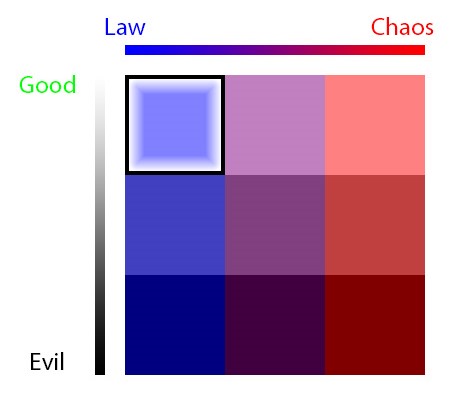
Understanding the subtle nuances of D&D alignments can be tricky, especially if you want to make your perfect character! Whether you’re leaning toward a traditional lawful good paladin or looking to spice things up with a lawful good rogue, you’re in the right place!
Lawful good characters value honor, law, and order. Their sense of justice drives them to do good deeds and fulfill the law to establish order. Their strong ideals make them close-minded and slow to adapt, but they are reliable allies who keep their promise and go beyond what is expected.
As we venture forth, you can expect something interesting to discover for D&D beginners and veterans. We’ll go over what it means to have a lawful good character, their characteristics, behaviors, decision-making process, and how they differ from similar alignments.
What Does It Mean To Have A Lawful Good Alignment in D&D?
Lawful good characters emphasize compassion, often referring to their sense of honor and duty to accomplish the task. While justice almost always points to satisfying a jurisdictional law, the term law can also gain meaning from the personal code of a character.
Lawful characters dislike actions that they believe may violate their code, even if those actions are good and benefit others. These include characters who may have taken an oath – like a paladin who joins a holy order or a knight sworn to protect the king.
A paladin may choose to carry out the tenets of their order perfectly and without question yet, care nothing for how the town guard views them. The same principles apply to clerics, monks, and other characters who operate within an organization.
Examples of Lawful Good Characters in Popular Media
Geralt of Rivia
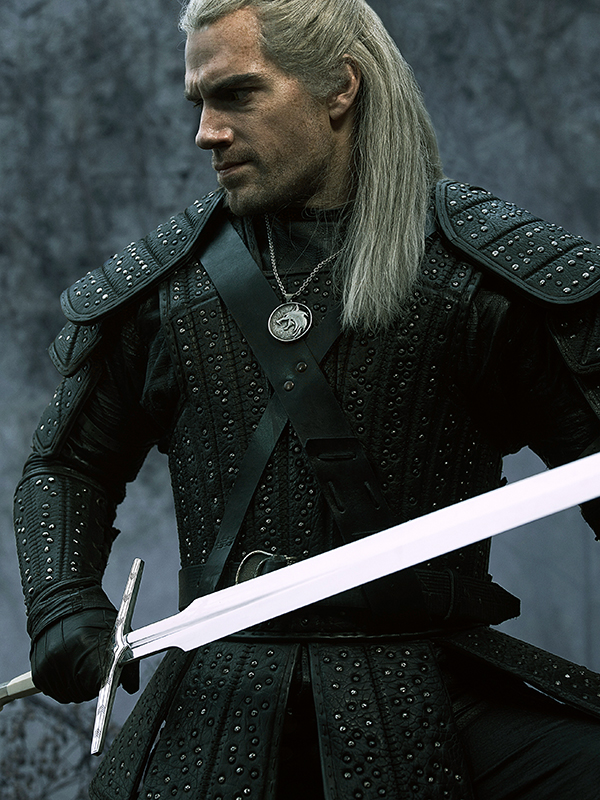
Our favorite witcher, Geralt of Rivia from the video game and Netflix series The Witcher, is also lawful good. He keeps strictly to his witcher code and doesn’t work for free. Queen Calanthe violated his code by expecting him to kill at her behest, and he challenged her. He slays monsters and often goes beyond the call of duty for the benefit of others.
Captain America

Captain America in the comics is another example of a lawful good character. He accepts the hero role, committing himself entirely to battle to conquer evil and see justice served. He goes beyond ordinary means to accomplish goodness and establish order.
How Have D&D Alignments Changed Since Its Inception?
Understanding how the current D&D 5th Edition alignment came to be will give you a solid grasp on how to play your lawful good character.
In the first D&D version published by Tactical Studies Rules (TSR) in 1974, players could choose between three alignments: Lawful, Chaotic, and Neutral.
- Lawful – Respect for and the desire to obey the rules of society
- Chaotic – The willingness to further individual importance and rebelliousness
- Neutral – Aim to strike a balance between lawful and chaotic
The D&D basic set was released in 1977 and added to the good alignment. The first half caters to selflessness and a desire to see positive change. The evil side portrayed self-importance and the willingness to disregard others as equals. Between them existed a fine line of neutrality.
It paved the way for characters to possess both lawful and evil qualities, like an oppressive tyrant or a chaotic good protagonist like Robin Hood.
The follow-up releases of D&D from 1977 – 1988 were a back-and-forth regarding alignments.
- Advanced Dungeons & Dragons (AD&D), 1977 – 1979, two-axis alignment
- D&D Basic Set, 1981, one-axis alignment
- AD&D 2nd Edition, 1988, two-axis alignment
Lawful Good: 3rd Edition Vs. 5th Edition
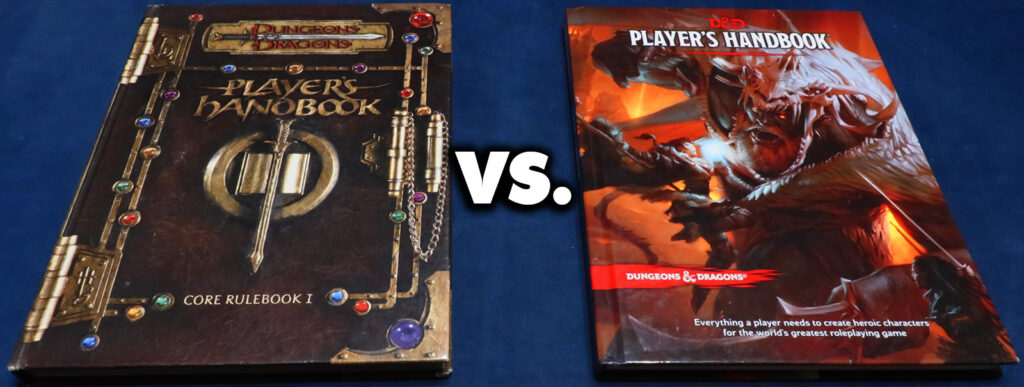
While D&D 3rd Edition, released in 2000, retained the exact alignments as before, it wasn’t until the D&D 3.5 Edition – Eberron Campaign Setting (2004) – that D&D alignments started to change.
It was possible for races with good alignments to have evil characters and for races known to be evil to have good characters. Parties with mixed alignments could now work together to conquer the greater evil that threatened them or their quest.
D&D 5th Edition came into town in 2014 and utilized an alignment system consisting of nine options, including a tenth one referred to as unaligned. The unaligned option made it possible for creature interactions to rely on their instinct rather than a moral scale.
The 5th Edition game design shifted away from focusing on alignments for certain races and monsters. The first two publications to introduce the changes were:
They gave players the freedom and elasticity to veer from their alignment choice rather than follow it blindly. Previous habits gave rise to the term “Lawful Stupid,” where characters disregard common sense and use only extremes, treating anyone as an enemy who appears to oppose the law.
Players appreciate this change because it appeals to their ability for roleplay and gives players the power to exercise their imagination to solve problems instead of referring back to their alignment.
A couple years later, a sourcebook called Mordenkainen Presents: Monsters of the Multiverse (2022) was released as a response to publication errors. It revised around 250 monsters and did away with preassigned alignments for all creatures, except named ones with significance and the potential to derail a campaign.
Creatures with strict past alignments, like demons, have descriptive alignments like “… are typically chaotic”, allowing for the possibility that you can befriend or work with them. The intuitive system is a boon for players and DMs alike, allowing players to approach dialogue creatively as DMs take on the role of a bloodthirsty priest or righteous demon.
What Are The Characteristics Of A Lawful Good Character?
Positive lawful good characteristics include honor, reliability, obedience to authority, order, keeping promises, and justice & fairness. The negative characteristics of lawful good include close-mindedness, blind obedience, inflexibility, and being judgmental.
Lawful good characters have the following positive traits:
- Strong sense of honor – Lawful characters believe it necessary to fulfill the purpose of a jurisdictional law or personal code. It allows them to achieve a result through their actions that they deem just and morally substantial.
- Reliable – Their strong sense of duty means they often go beyond what is typically required to achieve the desired result, making them stout allies.
- Obedient to authority to maintain peace – A town guard will obey and enforce the laws to appease authorities. A paladin will carry out the tenets of their order, and an assassin will kill witnesses to keep the peace with their organization or contractor.
- Order demands stability – Lawful good characters believe that order is necessary for goodness to exist. Self-serving people are anomalies to what should be and reduce stability by harming others through their selfishness.
- Promise keeper – Knowing that order is essential, lawful good characters do not lie. They commit themselves to see a task through until the end, especially if they made a promise.
- Justice and fairness – Justice drives lawful good characters, which includes rewarding good behavior and punishing bad behavior. Protecting those in need goes hand-in-hand with doing good to uphold the law.
Lawful good characters have flaws that can sometimes overshadow their goodness:
- Closed-mindedness – Since lawful good characters won’t do anything that violates their law or code, they are much less likely to reach a compromise with other characters.
- Blind obedience – When you believe something or someone is true and just, you stop questioning the belief or person, and the results may become detrimental. In some cases, it can hinder the progress of a quest.
- Disinterest to adapt – Lawful good characters are often so focused on the result that they can be stubborn when it comes to change, believing their way is the only viable one to success.
- Judgmental – Your sense of justice may cause you to hold others to the same standard. When other characters interact in a manner contrary to your beliefs, it may cause you to view that character differently.
Lawful Good Gods
Bahamut, the dragon god, Moradin, the dwarf god, and Yondalla, the halfling god, are lawful good deities.
In the same way that characters have an alignment, the gods also have an inherent desire for specific guided interactions. Characters typically follow the deity that matches their alignment, although there are no strict rules. Let’s look at some examples of lawful good deities, paying careful attention to their ideals, values, and allies.

Bahamut
Bahamut was a dragon god who belonged to the Faerûnian pantheon. He represents wisdom and a sense of justice imbued with mercy, forgiveness, and punishment. He was also god to metallic dragons – draconic creatures identified by the unique composition of their scales that looked like various metals.
Bahamut’s allies consisted of draconic beings of the Good alignment:
- Half-dragons – A creature with qualities from a dragon and another unrelated creature
- Dragonborn – A humanoid draconic race created by Bahamut (Abeiran and ancient ones)
- Other draconic creatures with a Good alignment

Moradin
Moradin was the deity of the dwarves, plus the chief in his pantheon. He judged fairly and harshly, outlining his strong will and leadership strength. Moradin’s ideals, coupled with a desire to see the dwarven people strengthened, inspired dwarven ingenuity and invention. He encouraged intelligence, goodwill, and harmony with other good races.
Moradin’s focus on good relations with other races grew into strategic alliances with:
- Gond – Faerûnian god of craft, smithing, and inventiveness
- Kossuth – Lord of Flames, the god of elemental fire
- Helm – Vigilant One, The Watcher, god of guardians, protection, and protectors
- Torm – The True, The Loyal Fury, the god of duty, loyalty, righteousness, and law
- Tyr – A greater god of justice and law in the Faerûnian pantheon
- heads of the elven, gnome, and halfling pantheons

Yondalla
Yondalla was the matriarch and creator of the halfling pantheon and race. She led by example with her charismatic and friendly demeanor. The halfling race echoed her ideals, adopting her loyalty to her people and her curious and often mischievous nature.
Yondalla shared close relations with:
- Garl Glittergold – The greater deity of gnomes
- Corellon Larethian – Patron god of all elves
- Moradin – God of the dwarves
Are Any Character Backgrounds Inherently Lawful Good?
The D&D 5th Edition alignment changes made it possible to play any alignment with any background.
One of the most exciting things about D&D is knowing your character can adjust their approach to a particular circumstance, even if it’s contrary to their alignment. If you play a lawful good character and one of your party members betrays your trust, your character may decide to treat future interactions with that person with suspicion and distrust.
Let’s take a deeper look at some character backgrounds in the D&D 5th Edition player handbook and how you can spice things up with your lawful good character!
Urchin
This background states that you grew up orphaned, poverty-stricken, and alone. You learned to survive by relying on yourself by living defensively and learning how to endure the harsh winters and pouring rain. Your cunning and agile nature helped you survive this long, making you more resilient than most others.
If your lawful good character is an urchin, you may have good ideals, choosing to show respect to all people – rich or poor. Your poverty-stricken upbringing caused you to develop a strong sense of empathy toward the suffering of others. You do not discriminate against people according to their social status.
By upholding your personal code of protection and string of good deeds for the benefit of others, an urchin with a lawful good alignment is possible.
At the other end of the character development spectrum, your character may adopt the opposite ideals. They may assume the role of an agent of the poor where their desire to uplift the poor causes them to treat the rich with degradation.
You happily steal from the rich and feel no obligation to lend a helping hand or regard them as anything other than the enemy. So while you don’t actively cause misery to the rich, your code tells you it’s lawful to prioritize people like you, and actions that further that creed are good.
Criminal
A lawful good character may have a criminal background. Perhaps an event in the character’s life caused them to leave behind their self-indulgent ways and seek a life of justice.
They may be on a path of redemption to atone for their past crimes. It may be that their stubbornness or greed caused the death of someone dear to them.
You could set out to prove your innocence after court officials accused you of conspiring to assassinate the king. By investigating the circumstances of your accusation through espionage instead of bloodshed, you’re upholding the law and performing a good action by ridding the world of corrupted individuals.
Does A Lawful Good Alignment Determine Your Class?
While classes like paladins are the stereotypical choice for lawful good alignment, they can be any alignment.
Paladin
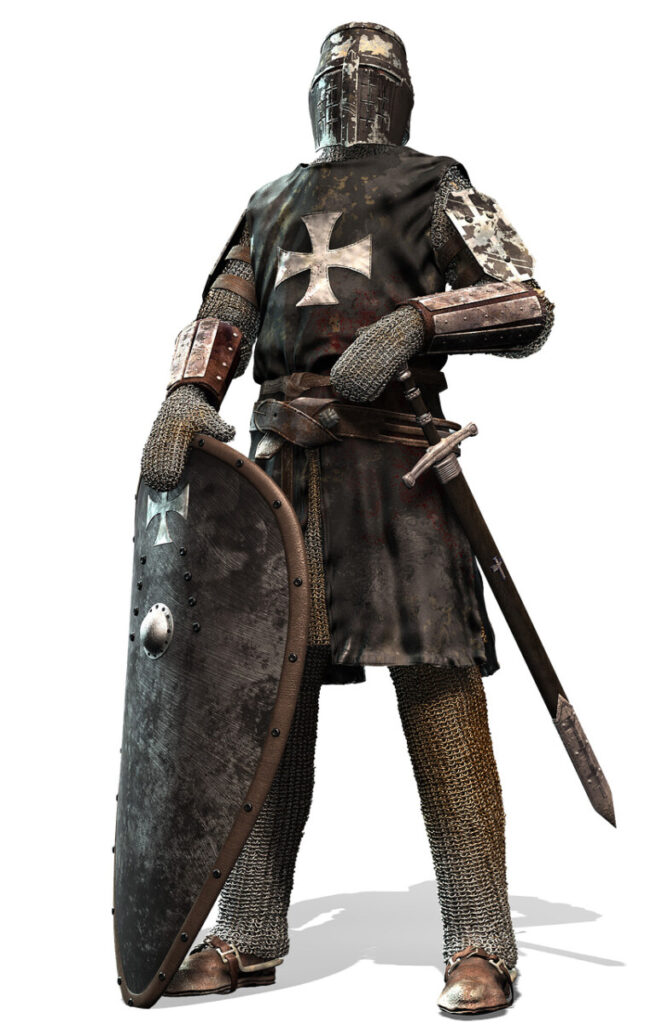
Paladins may be warriors of virtue and justice, but that does not subjugate them to picking the lawful good alignment.
It may be that you’re a paladin that didn’t agree with the ideals of your order and decided to desert and discover the truth for yourself.
Perhaps your order found you as a child and raised you after orcs raided your village and killed your parents. Despite the teachings of your order, the lingering desire for vengeance never left you.
Determined to avenge your parents, you desert your order without notice to hunt down the orc chieftain who led the raid on your village. You’re determined to see justice done and simultaneously prevent the murderous orc clan from repeating their acts of terror.
Rogue
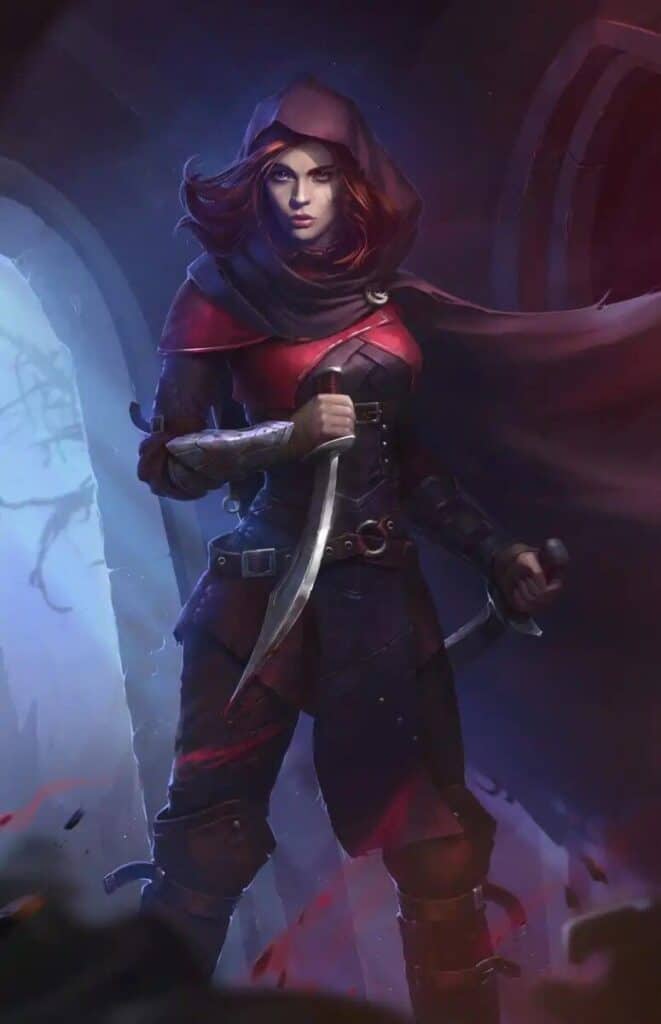
Rogues are infamous for unlawful acts of pickpocketing, silver-tongued dialogue, and deceptive misdirection. Despite appearances, the context in which they operate defines their intentions.
If your lawful good rogue character receives a request from a just and righteous king to infiltrate an opposing kingdom and assassinate the court wizard, it would not be lawful good.
If the king reveals he has information proving that the court wizard is using mind manipulation magic on the other king to start a war, the intention changes.
Your king wants to prevent unnecessary war and bloodshed, and by accepting the request, you perform a lawful action by keeping the peace and doing a good deed by removing an evil entity.
Cleric

Clerics have a reputation for channeling the divine magic of their gods to smite their foes or support their allies. Most people consider them authoritative figures in temples as they pray and help the oppressed. While these are traditional views of a lawful good priesthood, it’s not always the case.
Upon extensive research of the scriptures, it may be that your cleric discovered a passage that points to your god’s dark and sinister nature. When you question your fellow clerics, they call you blasphemous for questioning the divination of your god. Some go as far as making an attempt on your life, and so you flee the safety of your temple to seek sanctuary and answers elsewhere.
Your scriptural discoveries and experiences within your temple have left their scars, so your dwindling belief in your god prevents you from continuing to worship them. Everything you thought you knew was an illusion, but your lawful side demands truth and justice, while your good side believes it right to find the truth and expose your false god.
Lawful Good Vs. Lawful Neutral
While lawful good and lawful neutral characters both place value in honor, law, and order, lawful neutral are more likely to adopt a personal code of laws, especially from someone in authority they admire.
Have you ever read a book, played a video game, or watched, and in the dialogue, the protagonist says, “Stop this madness! Taking the life of an innocent will only lead to more bloodshed! Do you care nothing for the law?”. The antagonist might respond with, “I am the law!”.
The one causing the destruction considers their actions lawful because it fulfills their law or their personal code – their ideals, beliefs, and past experiences that govern their decision-making process. An example of such a character is Judge Dredd, played by Karl Urban in the movie Dredd (2012).
Other examples of lawful neutral characters are:
- Soldiers who follow orders
- Monks who follow the teachings of their master
- Judges that disregard sense and adhere only to the law
Lawful Good Vs. Lawful Evil
A lawful good character is an advocate of the law, but a lawful evil character regards it as a means to an end. They have no qualms about exploiting the law to benefit their ambitions. They lack moral values and believe that order is a necessary evil to accomplish their goals. They don’t follow a code, so their actions focus only on satisfying their whims and disregarding the plight of others.
Darth Vader is a heavy-hitter when it comes to lawful evil characters. He adheres to order when executing his plans but disregards morality and exploits the law for his benefit.
Other examples of lawful evil characters are:
- Tyrants
- Corrupt officials
- Devils
Lawful Good Vs. Neutral Good
Neutral good characters desire to perform good deeds without any precepts of law, expected behavior, or tradition. While they have no qualms working with lawful characters, they do not subscribe to their beliefs.
If the party has the opportunity to circumvent the law, neutral good characters don’t wrestle with indecisiveness like lawful good characters. While they are generally honest, the temptation to lie can catch up to them if the outcome favors them.
Popular neutral good characters include Gandalf the Grey from Lord of The Rings and Harry in the Harry Potter movies.
Gandalf was a powerful force that helped win the battle during the Battle of Helm’s Deep in Lord of The Rings: The Twin Towers, despite not belonging to an official organization or alliance.
When Harry Potter chose to save Fleur’s sister during the second test of the Triwizard cup in Harry Potter: The Goblet of Fire instead of winning the race, he did so not because a law drove him to, but because it was his desire.
D&D examples of neutral good creatures include:
- Celestials
- Gnomes
- Cloud giants
Lawful Good Vs. Chaotic Good
Lawful good characters gain direction from the law, but chaotic good characters value their personal freedom above all else. Their chaotic nature gives them the luxury of adapting quickly, but they carry a strong disdain for authority.
They do not shy away from taking drastic measures to achieve a good result, even if those methods may seem cruel to others. Their means often appear reckless compared to the rest of society.
Robin Hood is an example of a chaotic good character. The Chaotic in him means you can better understand his actions in context. He steals from the wealthy and gives to the poor; while giving to the poor may be good, stealing is unacceptable and chaotic. You cannot rob someone because they are wealthy.
His story occurs in a corrupt system where the poor suffer because the rich take all the wealth. The poaching is a result of the ban on hunting, even though people need to eat. Such is the corruption that prince john usurps the throne from the rightful king Richard. He oppresses the poor to build up the rich.
Robin opposes the law and the government because it’s corrupt, even though it makes him an outlaw. The proceeds go to the poor so they can survive.
D&D examples of chaotic good creatures include:
- Elves
- Unicorns
- Copper dragons
Conclusion
Lawful good characters value honor and order and often combine these to satisfy their need for justice. Their sense of justice leads them to perform benevolent deeds, and they believe this helps restore order. This ethos can come from either a personal code of honor or adoption of existing laws and tenets like those of a kingdom or a holy order.
While characters like Captain America, Geralt of Rivia, and Superman are all popular examples of lawful good characters, you don’t have to feel constrained to build a character with their exact personalities. Some lawful good characters can even be incredibly deep and complex as they work through situations that force them to analyze what is truly the right thing to do.
Lawful good alignment also shouldn’t feel like an obligation for classes like clerics and paladins or off-limits to classes like rogues and warlocks. Any class you choose to play can work with any alignment, and if you choose a route that subverts conventional expectations, you’ll be well on your way to creating a unique roleplaying experience for your party’s campaign.
And remember: lawful good isn’t lawful stupid. That one-dimensional path is a disservice to law, good, and the game as a whole, and it is neither fun to play as or with. Lawful good characters may be predictable at times, but much like lawful good people, there’s a lot of depth below the surface that you can develop to uniquely motivate your character’s decisions.
Other DnD Articles of Note
- 5E Feats Ranked
- Standard Array 5E Guide
- Passive Perception 5E Guide
- How Long Does DnD Take?
- Net 5E Weapon Guide
References:
- D&D Deities: Forgottenrealms.fandom.com
- D&D alignment history: Wikipedia.org
- D&D 5e Player Handbook: Online.anyflip.com
- Robin Hood: Quora.com
- The nature of Dredd: Wikipedia.org
- Judge Dredd says I am the law!: Youtube.com
- Lawful Good tropes: tvtropes.org
- Lawful Good types: tropedia.fandom.com
Braden is a founder of Assorted Meeples and has been a gamer & writer with a vivid imagination all his life. Don’t believe us? Check out his excitement when meeting Goosebumps author R.L. Stine as a kid! An avid Magic: The Gathering spellslinger for over 15 years, you can always convince him to shuffle up for a game (or three!) of Commander.
